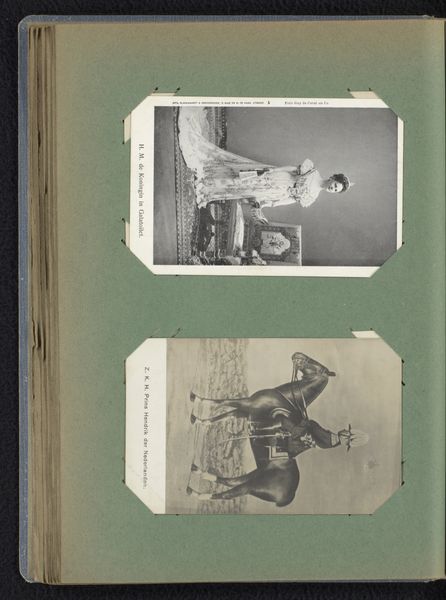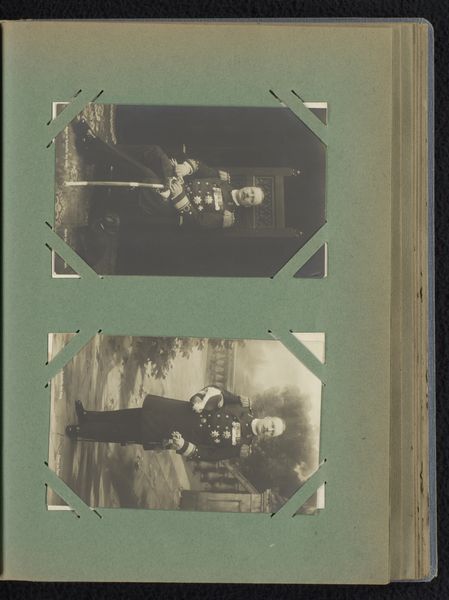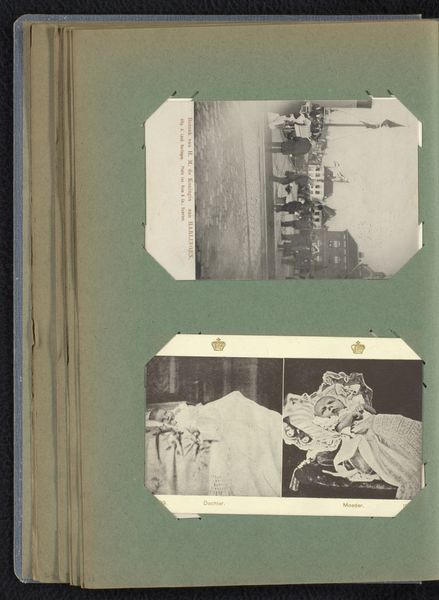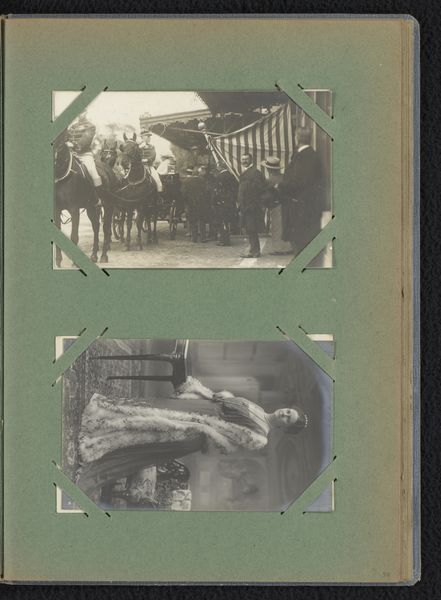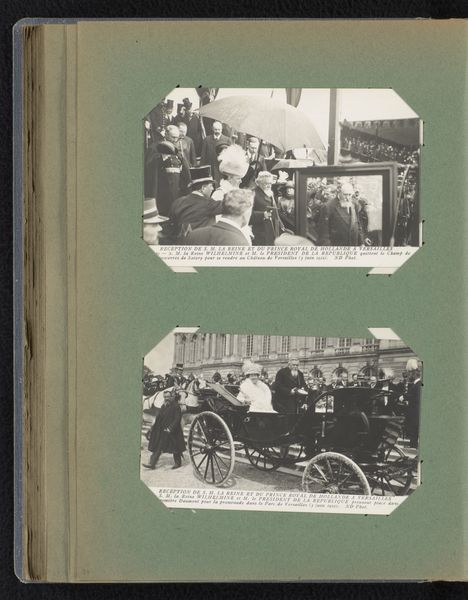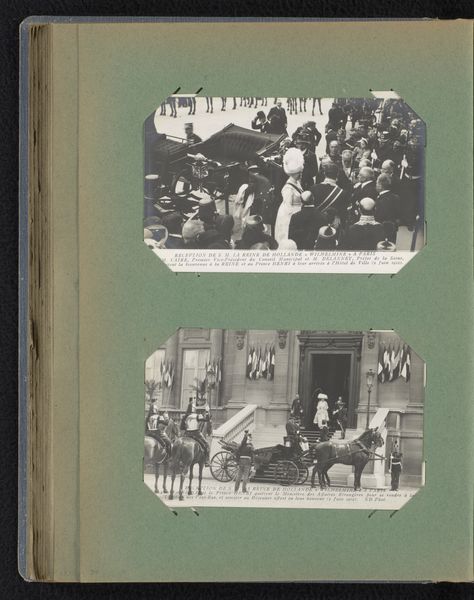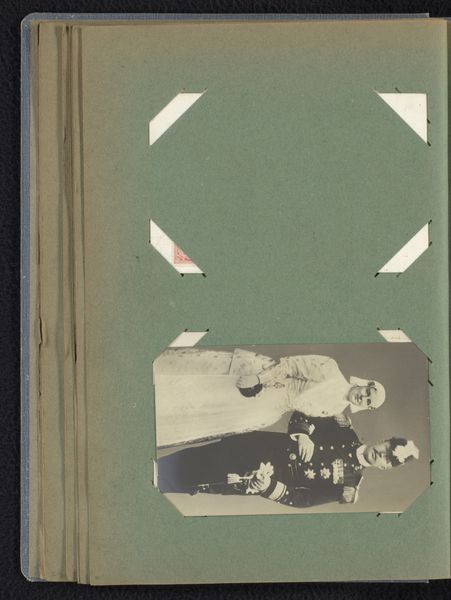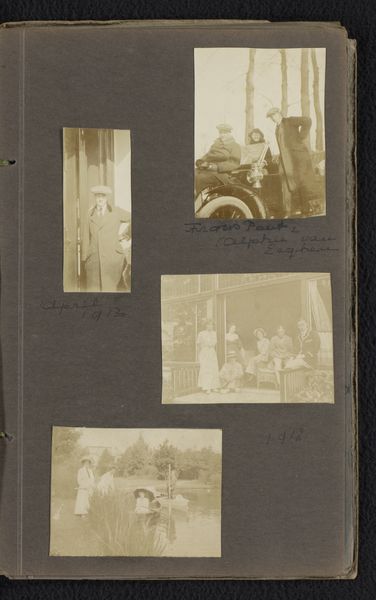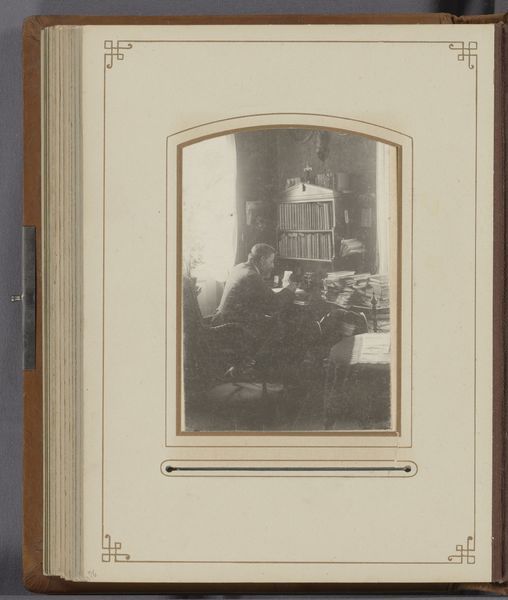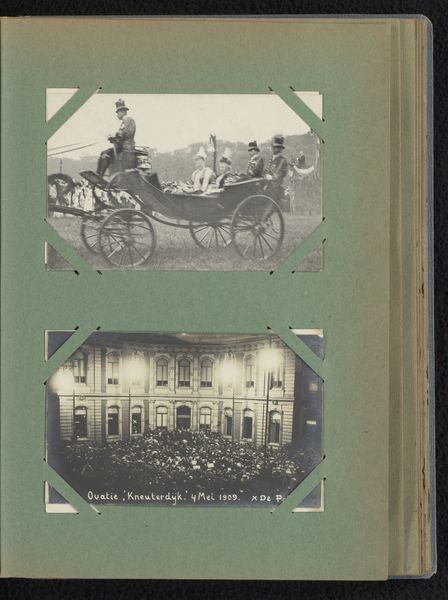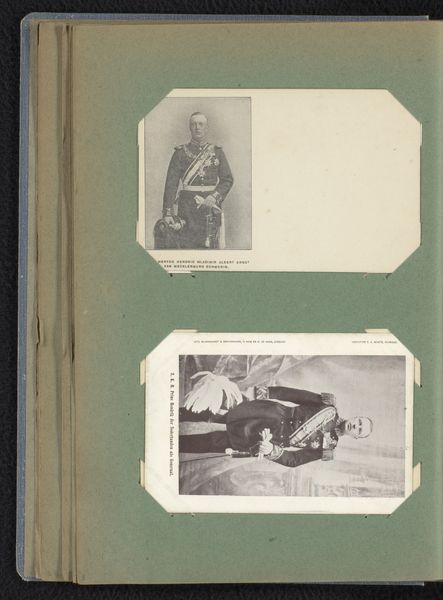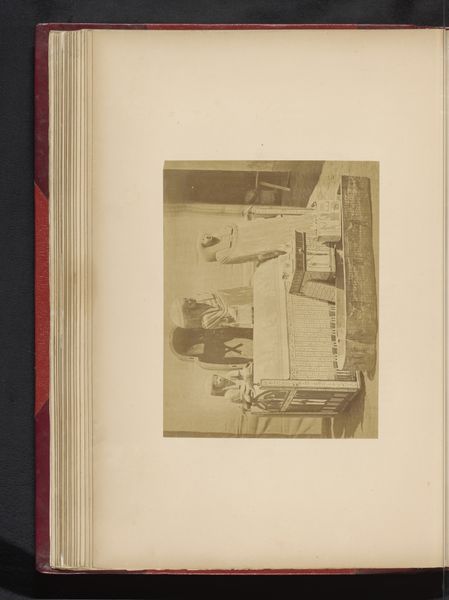
Twee prentbriefkaarten ter gelegenheid van het twaalf-en-een-halfjarig regeringsjubileum van koningin Wilhelmina en een portret van koningin-moeder Emma 1911 - 1915
0:00
0:00
photography, albumen-print
#
dutch-golden-age
#
photography
#
classicism
#
history-painting
#
albumen-print
Dimensions: height 90 mm, width 141 mm
Copyright: Rijks Museum: Open Domain
Editor: Here we have two postcards in an album. They commemorate the twelve-and-a-half-year jubilee of Queen Wilhelmina’s reign. The image above features multiple scenes of celebration. Below it is a portrait of Queen Mother Emma. There's something about the staged nature of these images that feels very constructed to me. What stories do these types of commemorative photographs tell us? Curator: They tell us a great deal, and very little. Constructed is right: they perform a version of history for popular consumption. This album's carefully arranged display becomes a tool to build and maintain national identity. What’s really being communicated here, beyond mere documentation of a reign? Editor: Perhaps it's about reinforcing the monarchy’s power and legitimacy. Showing stability, continuity… like a well-oiled machine. Curator: Exactly! Think about the visual language. Note the formality and idealized imagery which work to normalize and idealize power structures. What societal narratives are being implicitly endorsed or silenced here? How does that impact people outside those images? Editor: It’s hard to miss how these postcards elevate the royal family while probably overlooking the lives of the everyday citizens. They're mostly absent here. It definitely puts a different spin on what it means to mark this historical moment. Curator: Precisely. Now consider, if the goal is perpetuation of power, then how might this have shaped events in the subsequent World Wars? The stories we tell become self-fulfilling prophecies. Editor: I never really considered it like that, like image-making having an active part in shaping history. Curator: It does! So when we look at art, especially art used in these ways, we can always ask ourselves "who gets left out of the frame?". That is what helps us understand how we might strive to create something different going forward.
Comments
No comments
Be the first to comment and join the conversation on the ultimate creative platform.
